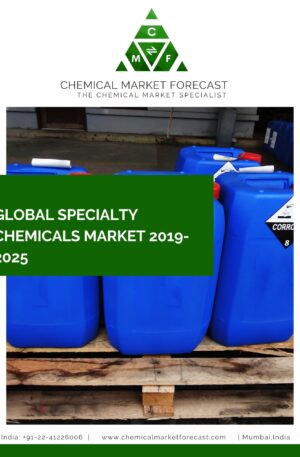Heat-Resistant Coatings Market Report
The global heat-resistant coatings market is expected to witness significant growth in the coming years. These coatings are designed to provide protection against high temperatures and reduce the transfer of heat to the substrate. Heat-resistant coatings are used in various industries, including automotive, aerospace, oil and gas, and building and construction, among others.
One of the major factors driving the growth of the heat-resistant coatings market is the increasing demand from the automotive industry. As vehicles are becoming more advanced, the need for heat-resistant coatings to protect engine components and exhaust systems is also increasing. Additionally, the growing trend of lightweight vehicles is driving the demand for heat-resistant coatings that can withstand high temperatures while also reducing weight.
Another factor driving the growth of the heat-resistant coatings market is the increasing demand from the aerospace industry. Heat-resistant coatings are used in aircraft engines and exhaust systems to protect against high temperatures and improve performance. With the growing demand for air travel, the demand for heat-resistant coatings in the aerospace industry is expected to continue to grow.
The oil and gas industry is also a major consumer of heat-resistant coatings. These coatings are used in pipelines, refineries, and other equipment to protect against high temperatures and corrosion. With the increasing demand for oil and gas, the demand for heat-resistant coatings in this industry is also expected to grow.
While heat-resistant coatings offer significant benefits, such as protection against high temperatures and improved performance, there are also some challenges associated with their use. Here are some of the key challenges of heat-resistant coatings: Adhesion: One of the main challenges with heat-resistant coatings is achieving good adhesion to the substrate. Adhesion can be affected by factors such as surface preparation, substrate type, and coating application method. Poor adhesion can lead to coating failure and reduced performance. Temperature range: Heat-resistant coatings are designed to withstand high temperatures, but there is a limit to their performance. Different coatings have different temperature ranges, and selecting the right coating for the specific application is critical. If the coating is not designed to withstand the temperatures it will be exposed to, it can fail and lead to equipment damage or safety issues. Chemical resistance: Heat-resistant coatings are often exposed to chemicals in their environment, such as fuels, solvents, and acids. Some coatings may not be resistant to certain chemicals, which can lead to degradation and reduced performance over time.
In terms of type, the heat-resistant coatings market can be segmented into epoxy, silicone, acrylic, polyester, and others. Among these, the epoxy segment is expected to hold the largest share of the market during the forecast period. Epoxy coatings are widely used in the automotive and aerospace industries due to their high temperature resistance and excellent adhesion properties.
Geographically, the heat-resistant coatings market can be segmented into North America, Europe, Asia Pacific, Middle East and Africa, and South America. Asia Pacific is expected to be the largest market for heat-resistant coatings during the forecast period. The region is home to some of the largest automotive and aerospace industries in the world, which is driving the demand for heat-resistant coatings.
In terms of key players, the heat-resistant coatings market is highly competitive. Some of the major players operating in the market include PPG Industries Inc., AkzoNobel NV, The Sherwin-Williams Company, Axalta Coating Systems Ltd., and Hempel A/S, among others. These companies are focusing on developing new and advanced heat-resistant coatings to meet the growing demand from various industries.
TABLE OF CONTENT
Global Heat-Resistant Coatings Market Report
1 Market Introduction of Global Heat-Resistant Coatings Market Report
2 Market Segmentation of Composites Market Report
2.1 Heat-Resistant Coatings Market Segmentation By Region
2.2 Heat-Resistant Coatings Market Segmentation By Type
2.3 Heat-Resistant Coatings Market Segmentation By Crop Type
3 Cost Structure of Heat-Resistant Coatings Market Report
4 Country Analysis of Heat-Resistant Coatings Market Report
4.1 China
4.1.1 Heat-Resistant Coatings Market Forecast & Size in China
4.1.2 Heat-Resistant Coatings Market Trends & Analysis in China
4.1.3 Key Heat-Resistant Coatings companies in China
4.1.4 Regulatory Framework of Heat-Resistant Coatings Market in China
4.2 Germany
4.2.1 Heat-Resistant Coatings Market Size in Germany
4.2.2 Heat-Resistant Coatings Market Trends & Analysis in Germany
4.2.3 Key Heat-Resistant Coatings companies in Germany
4.2.4 Regulatory Framework of Heat-Resistant Coatings Market in Germany
4.3 France
4.3.1 Heat-Resistant Coatings Market Size in France
4.3.2 Heat-Resistant Coatings Market Trends & Analysis in France
4.3.3 Key Heat-Resistant Coatings companies in France
4.3.4 Regulatory Framework of Heat-Resistant Coatings Market in France
4.4 Italy
4.4.1 Heat-Resistant Coatings Market Size in Italy
4.4.2 Heat-Resistant Coatings Market Trends & Analysis in Italy
4.4.3 Key Heat-Resistant Coatings companies in Italy
4.4.4 Regulatory Framework of Heat-Resistant Coatings Market in Italy
4.5 Netherland
4.5.1 Heat-Resistant Coatings Market Size in Netherland
4.5.2 Heat-Resistant Coatings Market Trends & Analysis in Netherland
4.5.3 Key Heat-Resistant Coatings companies in Netherland
4.5.4 Regulatory Framework of Heat-Resistant Coatings Market in Netherland
4.6 Russia
4.6.1 Heat-Resistant Coatings Market Size in Russia
4.6.2 Heat-Resistant Coatings Market Trends & Analysis in Russia
4.6.3 Key Heat-Resistant Coatings companies in Russia
4.6.4 Regulatory Framework of Heat-Resistant Coatings Market in Russia
4.7 Canada
4.7.1 Heat-Resistant Coatings Market Size in Canada
4.7.2 Heat-Resistant Coatings Market Trends & Analysis in Canada
4.7.3 Key Heat-Resistant Coatings companies in Canada
4.7.4 Regulatory Framework of Heat-Resistant Coatings Market in Canada
4.8 Mexico
4.8.1 Heat-Resistant Coatings Market Size in Mexico
4.8.2 Composite Market Trends & Analysis in Mexico
4.8.3 Key Composite companies in Mexico
4.8.4 Regulatory Framework of Composite Market in Mexico
4.9 Singapore
4.9.1 Heat-Resistant Coatings Market Size in Singapore
4.9.2 Heat-Resistant Coatings Market Trends & Analysis in Singapore
4.9.3 Key Heat-Resistant Coatings companies in Singapore
4.9.4 Regulatory Framework of Heat-Resistant Coatings Market in Singapore
4.10 United Kingdom
4.10.1 Heat-Resistant Coatings Market Size in United Kingdom
4.10.2 Heat-Resistant Coatings Market Trends & Analysis in United Kingdom
4.10.3 Key Heat-Resistant Coatings companies in United Kingdom
4.10.4 Regulatory Framework of Heat-Resistant Coatings Market in United Kingdom
4.11 Switzerland
4.11.1 Market Size in Switzerland
4.11.2 Market Trends & Analysis in Switzerland
4.11.3 Key Heat-Resistant Coatings companies in Switzerland
4.11.4 Regulatory Framework of Heat-Resistant Coatings Market in Switzerland
4.12 Brazil
4.12.1 Market Size in Brazil
4.12.2 Market Trends & Analysis in Brazil
4.12.3 Key Heat-Resistant Coatings companies in Brazil
4.12.4 Regulatory Framework of Heat-Resistant Coatings Market in Brazil
4.13 USA
4.13.1 Market Size in US
4.13.2 Market Trends & Analysis in US
4.13.3 Key Heat-Resistant Coatings companies in US
4.13.4 Regulatory Framework of Heat-Resistant Coatings Market in US
4.14 Japan
4.14.1 Market Size in Japan
4.14.2 Market Trends & Analysis in Japan
4.14.3 Key Heat-Resistant Coatings companies in Japan
4.14.4 Regulatory Framework of Heat-Resistant Coatings Market in Japan
4.15 South Korea
4.15.1 Market Size in South Korea
4.15.2 Market Trends & Analysis in South Korea
4.15.3 Key Heat-Resistant Coatings companies in South Korea
4.15.4 Regulatory Framework of Heat-Resistant Coatings Market in South Korea
4.16 India
4.16.1 Market Size in India
4.16.2 Market Trends & Analysis in India
4.16.3 Key Heat-Resistant Coatings companies in India
4.16.4 Regulatory Framework of Heat-Resistant Coatings Market in India
4.17 Thailand
4.17.1 Market Size in Thailand
4.17.2 Market Trends & Analysis in Thailand
4.17.3 Key Heat-Resistant Coatings companies in Thailand
4.17.4 Regulatory Framework of Heat-Resistant Coatings Market in Thailand
4.18 Russia
4.18.1 Market Size in Russia
4.18.2 Market Trends & Analysis in Russia
4.18.3 Key Heat-Resistant Coatings companies in Russia
4.18.4 Regulatory Framework of Heat-Resistant Coatings Market in Russia
4.19 Malaysia
4.19.1 Market Size in Malaysia
4.19.2 Market Trends & Analysis in Malaysia
4.19.3 Key Heat-Resistant Coatings companies in Malaysia
4.19.4 Regulatory Framework of Heat-Resistant Coatings Market in Malaysia
4.20 Saudi Arabia
4.20.1 Market Size in Saudi Arabia
4.20.2 Market Trends & Analysis in Saudi Arabia
4.20.3 Key Heat-Resistant Coatings companies in Saudi Arabia
4.20.4 Regulatory Framework of Heat-Resistant Coatings Market in Saudi Arabia
5 Global Heat-Resistant Coatings Market Trends
5.1 Heat-Resistant Coatings Market Trends- Key Drivers
5.2 Heat-Resistant Coatings Market Trends- Key Restraints
5.3 Heat-Resistant Coatings Market Trends- Key Challenges
5.4 Porter’s Five Forces Analysis of Heat-Resistant Coatings Market
5.5 PEST Analysis- Heat-Resistant Coatings Market
6 Global Heat-Resistant Coatings Market Forecast
6.1 Global Heat-Resistant Coatings Market Forecast By Region
6.1.1 North America
6.1.2 Europe
6.1.3 APAC
6.1.4 Middle East
6.1.5 ROW
6.2 Global Heat-Resistant Coatings Market Forecast By Type
6.2.1 Fertilizer
6.2.2 Pesticide
6.3 Global Heat-Resistant Coatings Market Forecast By Crop Type
6.3.1 Fruits & Vegetables
6.3.2 Oilseed and Pulses
6.3.3 Cereals & Grains
6.3.4 Other
7 Supply Chain of the Heat-Resistant Coatings Market Analysis
8 Opportunity Analysis
9 Scenario Analysis
10 Key Company Profiles
11 Strategic Conclusions – Heat-Resistant Coatings Market Report
12 Abbreviations used in Heat-Resistant CoatingsMarket Report






Reviews
There are no reviews yet.